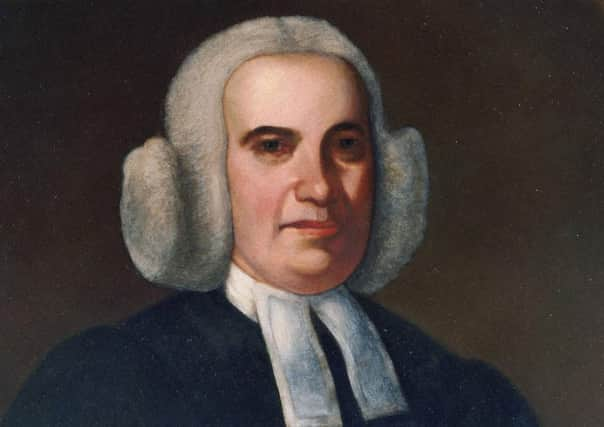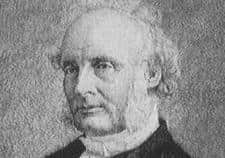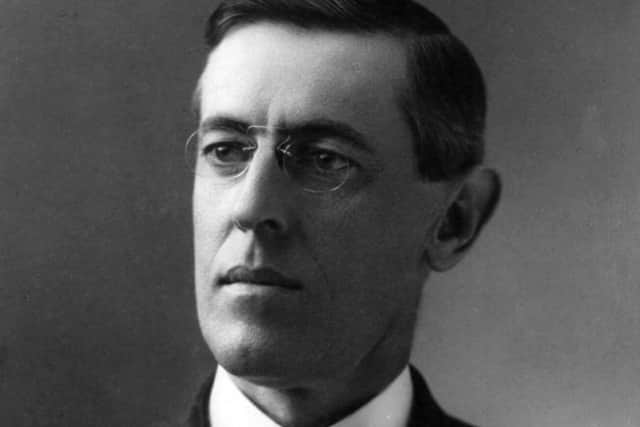Princeton University has strong ties to Ulster and Presbyterianism


Presbyterians, whether in Scotland, Ulster or in America, placed great emphasis on the importance of education and the importance of an educated ministry.
The motivation behind the former was to create universal literacy to enable men and women to read and study the Bible. Thus in Scotland it was the normal thing for a Lowland parish to have its own school before the Glorious Revolution, if not indeed before the National Covenant.
Advertisement
Hide AdAdvertisement
Hide AdThe desire behind the latter was the creation of an educated ministry to preach the Word of God. Early modern Scotland was fortunate to having four universities to achieve this goal: Aberdeen, Edinburgh, Glasgow and St Andrews.


The Log College, the first theological seminary serving Presbyterians in North America, was founded by William Tennent, in 1727.
Although born in Mid Calder in West Lothian in 1673 and a graduate of Edinburgh in 1695, Tennent was ordained in the Church of Ireland in 1706.
He migrated to the American colonies in 1718, and at the prompting of Lurgan-born James Logan, his wife’s cousin and William Penn’s right-hand man, he settled in Pennsylvania. In 1726 he received a call to Neshaminy-Warwick Presbyterian Church in Warminster where he served until his death in May 1746.
Advertisement
Hide AdAdvertisement
Hide AdDespite its humble origins, Tennent’s Log College had a disproportionate impact on 18th-century American life and culture. Although the college probably never produced any more than 20 ‘graduates’, no college has ever produced so many eminent men in proportion to the number of its students, a number of whom became revivalist preachers in the ‘First Awakening’ of the 1730s and 1740s. Its second claim to significance is that Tennent’s Log College is widely regarded as the precursor of Princeton University.


In Elizabeth, New Jersey, Log College ‘graduates’ joined forces with men from New York and northern New Jersey to form the Synod of New Jersey in September 1746 and the following month they applied for a college charter, a college which was to become the educational and religious capital of Scottish Presbyterian America.
In 1754, trustees of the College of New Jersey suggested that, in recognition of Governor Jonathan Belcher’s benign interest, the institution should be renamed as Belcher College. Belcher wisely observed: ‘What a name that would be!’
Governor Belcher presented the college with his library, consisting of 474 volumes, many of them highly valuable.
Advertisement
Hide AdAdvertisement
Hide AdBelcher was immensely proud of his association with the college which he regarded as ‘a seminary for religion and learning’ for ‘the better enlightening of the minds and polishing the manners of this and the neighbouring colonies’.
In 1756, the college moved its campus to Princeton, New Jersey. Its home in Princeton was Nassau Hall named in honour of ‘the immortal memory of the glorious King William the Third, who was a branch of the illustrious House of Nassau’.
The chief source for the funds for the erection of Nassau Hall was the collection raised by the Rev Gilbert Tennent of Philadelphia (son of William Tennent) and the Rev Samuel Davies of Hanover County, Virginia, in the British Isles in 1753 and 1754.
Although times were hard for both clergy and people in Ulster, Ulster Presbyterians responded generously, striking evidence of the close ties between Ulster and American Presbyterianism.
Advertisement
Hide AdAdvertisement
Hide AdNassau Hall briefly served as the capitol of the United States when the Continental Congress convened there in the summer of 1783.
Princeton was the fourth college to be established in the American colonies, Harvard in 1683 being the first, William and Mary in Virginia coming second in 1691 and Yale third in 1701.
The presidents of Princeton, by virtue of achieving the position, were usually men of great distinction. (Shirley Tilghman, a molecular biologist, became the 19th and first female college president in 2001.)
Jonathan Edwards, the famous theologian closely associated with the ‘Great Awakening’, was the third president of the college. He died shortly after taking up the position as a result of a smallpox inoculation. He was also the grandfather of Aaron Burr, the third vice-president of the United States.
Advertisement
Hide AdAdvertisement
Hide AdThe Rev Samuel Finley was the fifth president of the college. He was born in Co Armagh, possibly Mullabrack, in 1715 and was probably a graduate of Tennent’s Log College and was the great grandfather of Samuel Finley Breese Morse, the originator of the telegraph and the Morse Code.
Having spent 16 years as professor of logic and metaphysics in Queen’s College, Belfast, where he wrote a series of influential philosophy texts, in 1868 James McCosh became the 11th college president.
In the years during and after the Civil War the institution had been in the doldrums but over the next two decades McCosh raised the prestige of the institution by recruiting distinguished scholars, overhauling the curriculum (not least by expanding the place of the sciences), and instigating graduate research. He also embarked upon a major building programme on the campus.
McCosh is credited with laying the foundations of the modern university.
Advertisement
Hide AdAdvertisement
Hide AdBefore he became the 28th president of the United States, Woodrow Wilson was an academic who became the 13th president of the college. Wilson aspired, as he told alumni, ‘to transform thoughtless boys performing tasks into thinking men’.
Like McCosh, he too was an educational reformer but not as successful as McCosh because his abrasive personality provoked strong resistance.
In addition to Wilson, two other US presidents, James Madison and J F Kennedy, have attended Princeton.
Princeton can count 12 Supreme Court justices, eight secretaries of state, three secretaries of defense, two chairmen of the joint chiefs of staff and numerous members of Congress among its alumni.
Advertisement
Hide AdAdvertisement
Hide AdPrinceton is one of the top 10 universities in the world and one of the world’s foremost research universities with connections to more than 69 Nobel laureates. Twenty-nine have won the Nobel Prize for Physics.
Woodrow Wilson was the first Princeton-affiliated Nobel laureate. He won the Peace Prize in 1919.